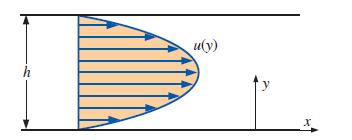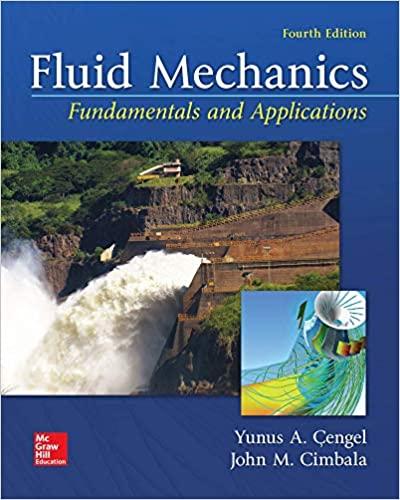Consider the two-dimensional Poiseuille flow of Prob. 499. The fluid between the plates is water at 40C.
Question:
Consider the two-dimensional Poiseuille flow of Prob. 4–99. The fluid between the plates is water at 40°C. Let the gap height h = 1.6 mm and the pressure gradient dP/dx = –230 N/m3. Calculate and plot seven path lines from t = 0 to t = 10 s. The fluid particles are released at x = 0 and at y = 0.2, 0.4, 0.6, 0.8, 1.0, 1.2, and 1.4 mm.
Data from Problem 99
Consider fully developed two-dimensional Poiseuille flow—flow between two infinite parallel plates separated by distance h, with both the top plate and bottom plate stationary, and a forced pressure gradient dP/dx driving the flow as illustrated in Fig. P4–99. (dP/dx is constant and negative.)
The flow is steady, incompressible, and two-dimensional in the xy-plane. The velocity components are given by

where μ is the fluid’s viscosity. Is this flow rotational or irrotational? If it is rotational, calculate the vorticity component in the z-direction. Do fluid particles in this flow rotate clockwise or counterclockwise?
Fig. P4–99.

Step by Step Answer:

Fluid Mechanics Fundamentals And Applications
ISBN: 9781259696534
4th Edition
Authors: Yunus Cengel, John Cimbala




